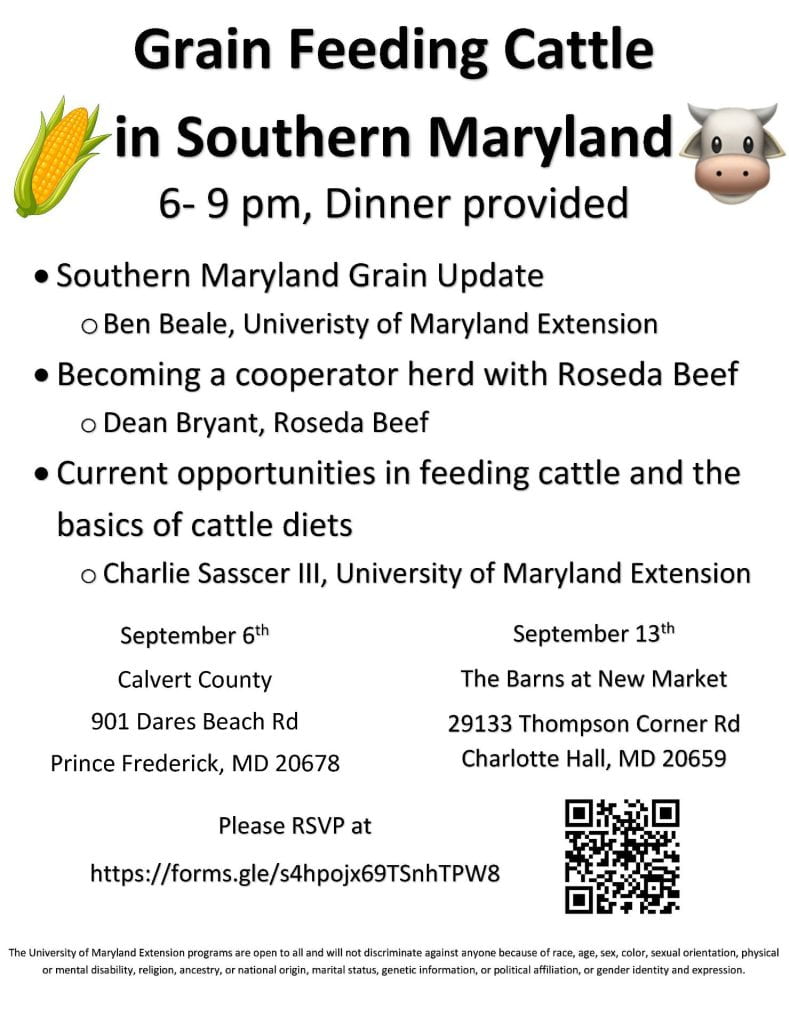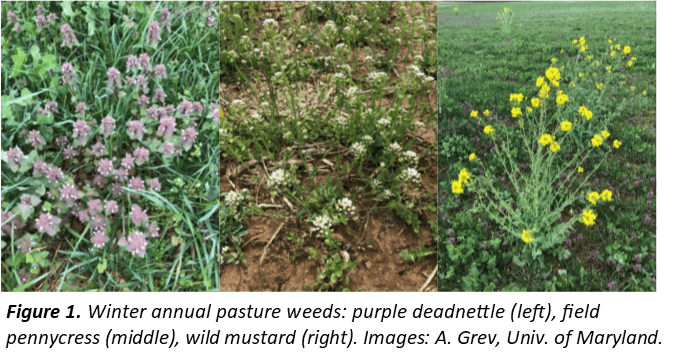POSTPONED
Check back in the future for details.
The Maryland Extension Beef Team is continuing with our Beef Producers Short-course Series with Series III – Pasture Development and Management. Topics covered will be soil fertility, collecting soil samples, developing pasture systems, common forages, pasture assessments, weed identification and management, matching forages with cattle nutrition, and cost sharing programs.
Course offered at 4 locations across the state:
Washington County Extension: April 3, 2020
St. Mary’s County Extension: April 17, 2020
Wye Angus: May 1, 2020
Harford County Extension: May 15, 2020
Registration is required: $35 per person – Fee includes all educational materials and lunch. The workshop will be open to the first 30 registrations per location.
***This program has been approved for 4 CEUs in all categories of Ag Nutrient Management and 4 Credits towards Pesticide Applicator Recertification in the Categories of 1A, 3C, 10, PVT
To register online, please visit our Eventbrite page: https://umdbeef-series3.Eventbrite.com and select the date for the workshop you would like to attend.
To register offline, via check or cash, please use the attached form and either email or mail to Racheal Slattery at rslatt@umd.edu (University of Maryland, 8127 Regents Drive, College Park, MD 20742)
Agenda
8:45-9:00am Registration and Refreshments – Welcome
9:00-9:30am Soil Fertility and Management: Good Pastures Start with the Soil
Andrew Kness, UMD Extension-Harford County
9:30-10:00am Setting up a Pasture System: How to set up a System that works for your Farm
Racheal Slattery, UMD Dept. of Animal Sciences
10:00-10:30am Not all Forages are the Same: Common Forages and their Adaptability and Utility in a Pasture System
Dr. Amanda Grev, UMD Extension-WMREC
10:30-10:40am Break
10:40-11:10am Principals of Weed Management: Weed ID and Management in Pastures
11:10-11:40am Extending the Grazing Season: Using Summer Crops and Annuals
Jeff Semler, UMD Extension-Washington County
11:40-12:10pm Matching Forages with Cattle Nutrition
Dr. Sarah Potts, UMD Extension-WMREC
12:10-12:30pm Financial Assistance:
Cost-share Programs for Cattle Producers
NRCS Representative
12:30-1:00pm Lunch
1:00-1:30pm Soil Health (Hands-on)
Andrew Kness and Jeff Semler
1:30-3:00pm Pasture Assessment and Grazing Management with in Field Plant Identification (Hands-on)
Dr. Amanda Grev, Jeff Semler
3:00-3:30pm Wrap-up and Questions: Including participant samples for plant ID and soil or forage report analysis interpretation.


